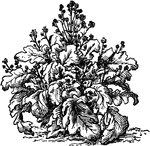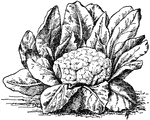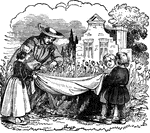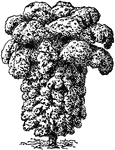Clipart tagged: ‘horticulture’

Glossy Abelia
"Ornamental plants, cultivated chiefly for their handsome flowers. The Abelias are small or medium-sized…
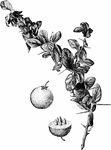
Aberia Caffra
"Aberia Caffra, Hook. f. & Harv. Fig. 59. Thorny, glabrous: lvs. obovate, obtuse, cuneate at base, entire:fls.…
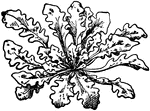
Wild Cliff-Cabbage
"Wild cliff-cabbage, hypothetical ancestor of the numerous modern horticultural forms." -Gager, 1916

Cleft Grafting
Grafting is a horticultural operation which consists in placing together the two cut surfaces of different…

Crown Grafting
Grafting is a horticultural operation which consists in placing together the two cut surfaces of different…

Balsam Fir Tree Cone
Abies Balsamea (Balsam Fir) or Balm of Gilead Fir, lvs. dark green and lustrous above, pale below, rounded…

Grand Fir Tree Cone
"A. grandis (Grand Fir) - Fig. 60.- tree, 200-300ft.: trunk becoming 4ft. in diam. lvs. thin and flexable,…

Silver Fir Tree Cone
"Picea, Silver Fir. Fig. 60. Tree, 100-200 ft: trunk 6-8 ft. in dia.: lvs. flat, distichously spreading,…

Forcing House
Whenever continuous supplies of cucumbers, melons, and tomatoes are required, it is most convenient…

In-Arching (Grafting)
Grafting is a horticultural operation which consists in placing together the two cut surfaces of different…

Inlaying (Grafting)
Grafting is a horticultural operation which consists in placing together the two cut surfaces of different…
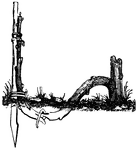
Layering Method of Plant Propagation
Layering is a method of plant propagation by which a part of the plant is bent down and covered with…
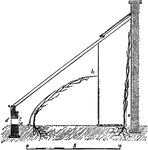
Peach House
The peach house is a structure in which the ripening of the fruit is accelerated by the judicious employment…
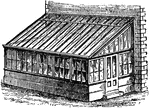
Plant House
A lean-to plant house which is associated with the growth of ornamental plant and flowers.
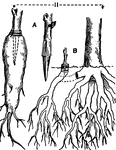
Root Grafting
Grafting is a horticultural operation which consists in placing together the two cut surfaces of different…
Saddle Grafting
Grafting is a horticultural operation which consists in placing together the two cut surfaces of different…
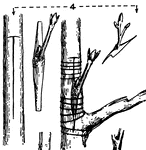
Side Grafting
Grafting is a horticultural operation which consists in placing together the two cut surfaces of different…

Terminal Herbaceous Grafting
Grafting is a horticultural operation which consists in placing together the two cut surfaces of different…
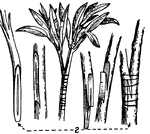
Veneering (Grafting)
Grafting is a horticultural operation which consists in placing together the two cut surfaces of different…
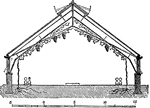
Span-Roofed Vinery
A span-roofed vinery is a type of plant house which affords roof space for the development of vines.
Wedge Grafting
Grafting is a horticultural operation which consists in placing together the two cut surfaces of different…
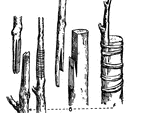
Whip Grafting
Grafting is a horticultural operation which consists in placing together the two cut surfaces of different…
